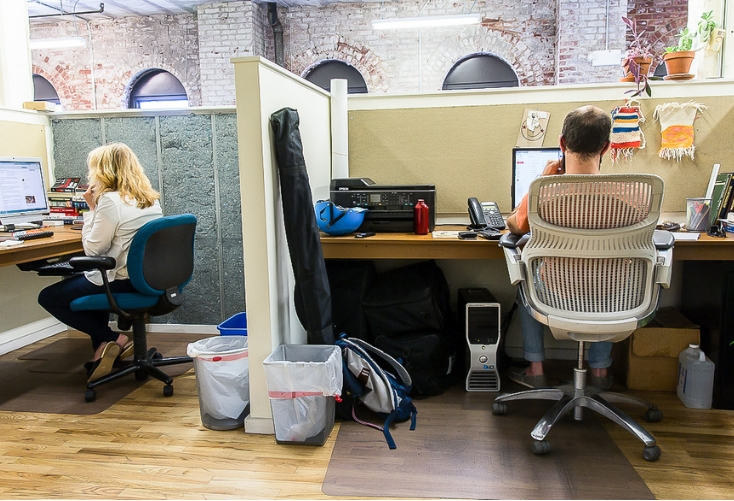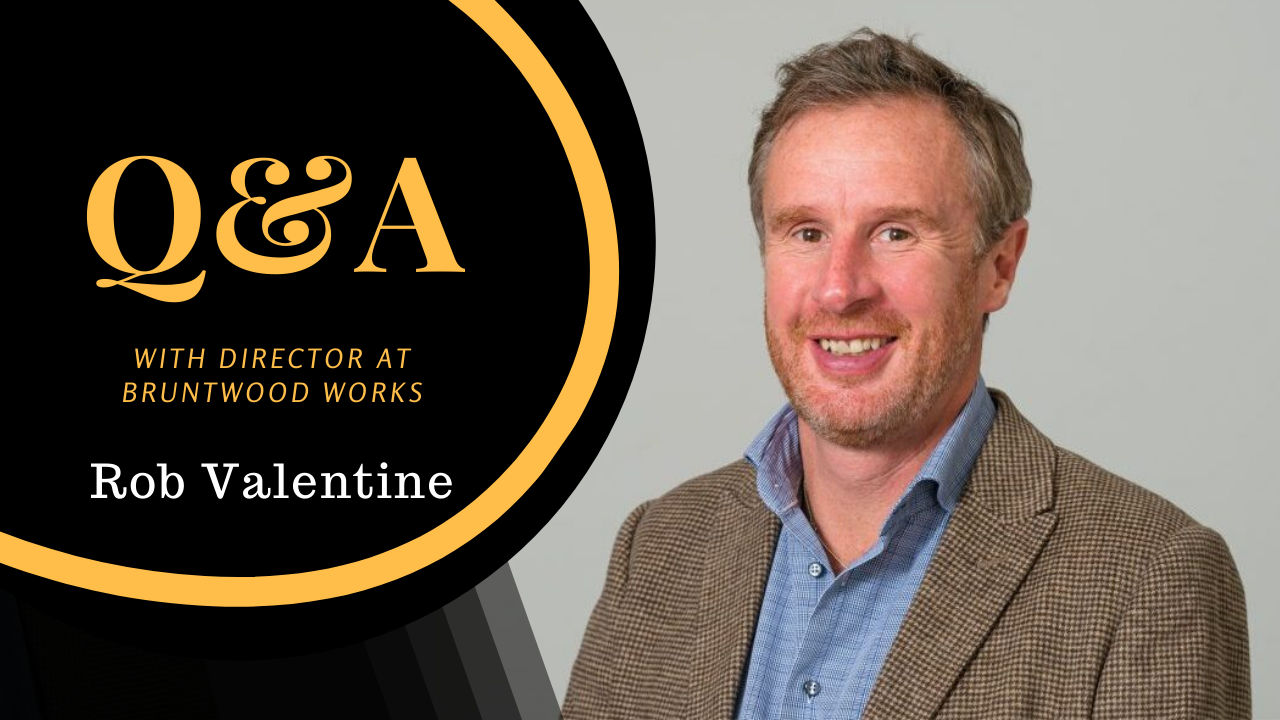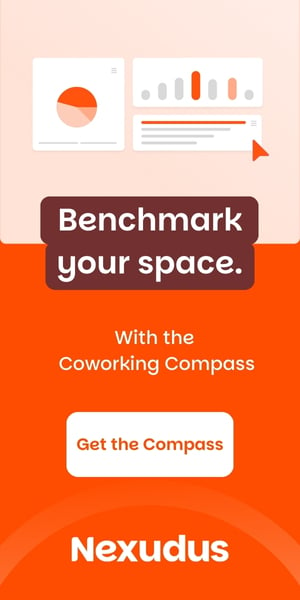- Brooklyn Creative League co-founders Neil Carlson and Erin Carney leverage the many advantages of being an independent coworking operator.
- They operate on a basis of keeping business local and being financially responsible, while remaining responsive to their community.
- Under an “equitable neighborhood development” model, BCL partners with local communities and uses coworking as a way to create a more equitable local economy.
Think small.
Bill Bernbach’s legendary headline for the VW beetle changed advertising.
Now, more than 50 years later, it still rings true as a competitive strategy when the Davids of the coworking world meet the Goliaths.
At Brooklyn Creative League, co-founders Neil Carlson and Erin Carney have embarked on a deliberate growth path that leverages the many advantages of being an independent coworking operator, while also running a profitable business that embraces the “community capitalism” the space was founded on.
Allwork spoke with Carlson about what he’s learned in 10 years of operating BCL and his vision for the future, which was inspired by an Ann Arbor deli.
Part 2 covers how the BCL team developed and introduced guidelines to manage behavioral expectations and minimize conflict within their community.
Comments have been edited for space and clarity.
“Launching a business is like sailing a ship across the ocean: Your vision extends only to the point on the horizon where the earth curves beyond sight. Once you reach the offing, you have to create a new vision and set your company on a new course.” (Brooklyn Creative League: Business Vision 2027)
Allwork.Space: How did you go about planning for the next 10 years?
Neil Carlson: I’ve always admired Zingerman’s Deli in Ann Arbor, one of the pioneers in the artisanal food movement in the 1980s. When their deli and food shop became successful, they had investors come to them and say they should be growing and taking things to scale.
The two founders realized that they didn’t want to pursue the investor-backed model of single-minded growth for growth’s sake and financial returns at any cost. What they wanted to do was to keep business local, be financially responsible, but also responsive to broader community and to their employees.
So, instead of taking one business to scale and getting it as big and robust as possible, they did “pivot businesses.” They developed a coffee company, candy company, and a roadhouse serving American cuisine.
They did it by partnering with their general managers to run businesses while they served an advisory role. They grew their business in a way that was profitable but rooted in local community, so they were able to provide jobs and benefits for employees.
That resonated with how we had always done business.
What they did, and what they now teach other companies to do, is to create a vision of where they wanted to be 15 years out. We went out to Ann Arbor, and spent three days coming up with a 10-year plan of where we wanted to take BCL.
What vision emerged from the training?
We want to add five more locations in 10 years. We want to capitalize it by using a combination of worker ownership and more conventional sources of capital. So, when we hire managers to run those locations, we want them to have a significant piece of the ownership in that location.
We want to use coworking as a driver for what we call equitable neighborhood development. So instead of being a force of commercial and residential gentrification, we really want to partner with the communities we’re going into and use coworking as a way to create a more equitable local economy.
You can see our 10-year vision on our website. Our plan also calls for opening up to three pivot businesses. So, it could be a digital agency. It could be a consulting company. It could be a small business development arm that offers classes and training for people to grow their businesses.
It’s all under the aegis of what we call community capitalism, and those are businesses that are rooted in or responsive to their communities and are still run as for-profit companies. So, we’re using our coworking space as a laboratory to create new business models that are profitable but still responsive to the needs of local communities and the entrepreneurs who run them.

Isn’t it tempting to seek the economies of scale you can get in expansion?
What we realized is that you can either have economies of scale on the real estate side where you’re developing 50,000 up to 200,000 square feet at a time, packing people in as densely as possible.
Or, you can have a real community. But you can’t have both.
There’s social science that supports this thesis. It says that the upper limit of a group size where you can know everybody personally and understand the relationship within that group is around 200. Once you get over that number – which is called Dunbar’s number — the implicit social ties and understanding that you have within a community or group start to break down.
Then you need more rules and structure and governance to create a viable space. With that anonymity comes a lack of personal responsibility and a lack of empathy.
So, if you can keep the size of those communities smaller, it creates a more authentic community and better experience because people are grounded. They know each other. They have actual human relationships with each other as opposed to just being one of a thousand people in a space.
It’s the difference between a community and a network. A network can be as big as you want to build it. Facebook and Google have built entire businesses off of networks. Whereas a community has a cap on it. Once you go beyond that, you start undermining the value and integrity of that community.
Besides community, are there economic advantages to a right-sized, smaller growth model?
We found that it actually allows us to do things in the physical environment that we couldn’t do if we had a larger space.
For example, because people know each other, we can leave our dedicated desks open. We don’t have to have locks and doors on everything. That lowers our capital costs. We still have security cameras to trust and verify, but in terms of using that social glue as a way to reduce our costs, I feel like that’s been a pretty smart move of ours.
We built that way intuitively because we knew didn’t want to run a huge, anonymous space. We enjoy our members. We get value out of our relationships with those people. It was never really practical for us to try to do something at this massive scale. We strongly feel that the personal touch, that authentic professional community is one of the core drivers of economic value of our business.

Why this strategy? And why now?
Part of our mission is to promote different business models that are more sustainable and healthier for local communities and economies. We need different capital models — more and better alternatives to venture capital, private equity, Anglo American style of capitalism.
We need different operating models. We need different strategies for building those businesses.
Zingerman’s has shown it can be done.
Not everyone wants to run a Fortune 500 company. I’d love to look back 10 years from now and be in a position where folks who are coming up are saying, “I want to do it the way BCL did it.” That is to run a business that’s profitable, community-minded and still innovative and interesting and fun to run. That’s what I want to do.
My ambition is not to conquer the world. My ambition is to run a great business and leave the world a better place. And I found it. Business is the way we’re going to do that.
See part 2 in tomorrow’s issue for more on how Neil Carlson and Erin Carney built community and culture and leveraged it as a competitive strategy.


 Dr. Gleb Tsipursky – The Office Whisperer
Dr. Gleb Tsipursky – The Office Whisperer Nirit Cohen – WorkFutures
Nirit Cohen – WorkFutures Angela Howard – Culture Expert
Angela Howard – Culture Expert Drew Jones – Design & Innovation
Drew Jones – Design & Innovation Jonathan Price – CRE & Flex Expert
Jonathan Price – CRE & Flex Expert















